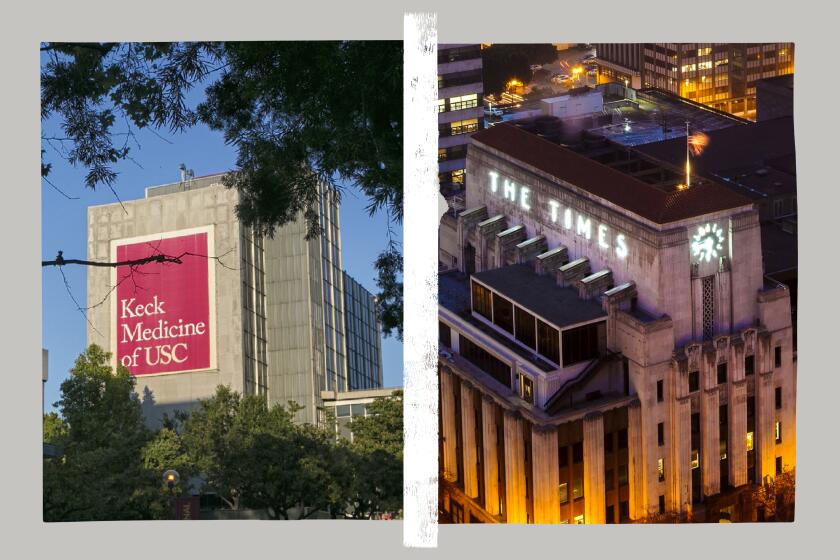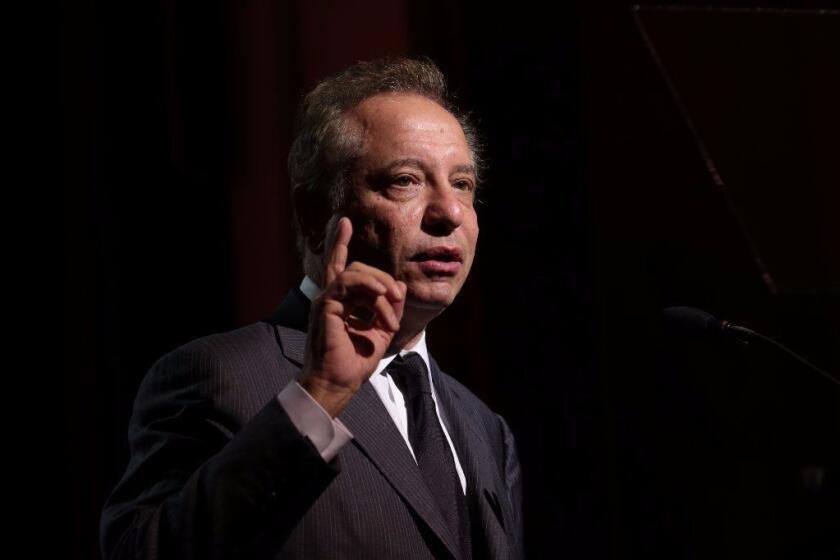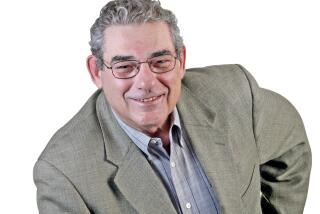Review: A Times reporter broke a major USC scandal. The real challenge: getting it published
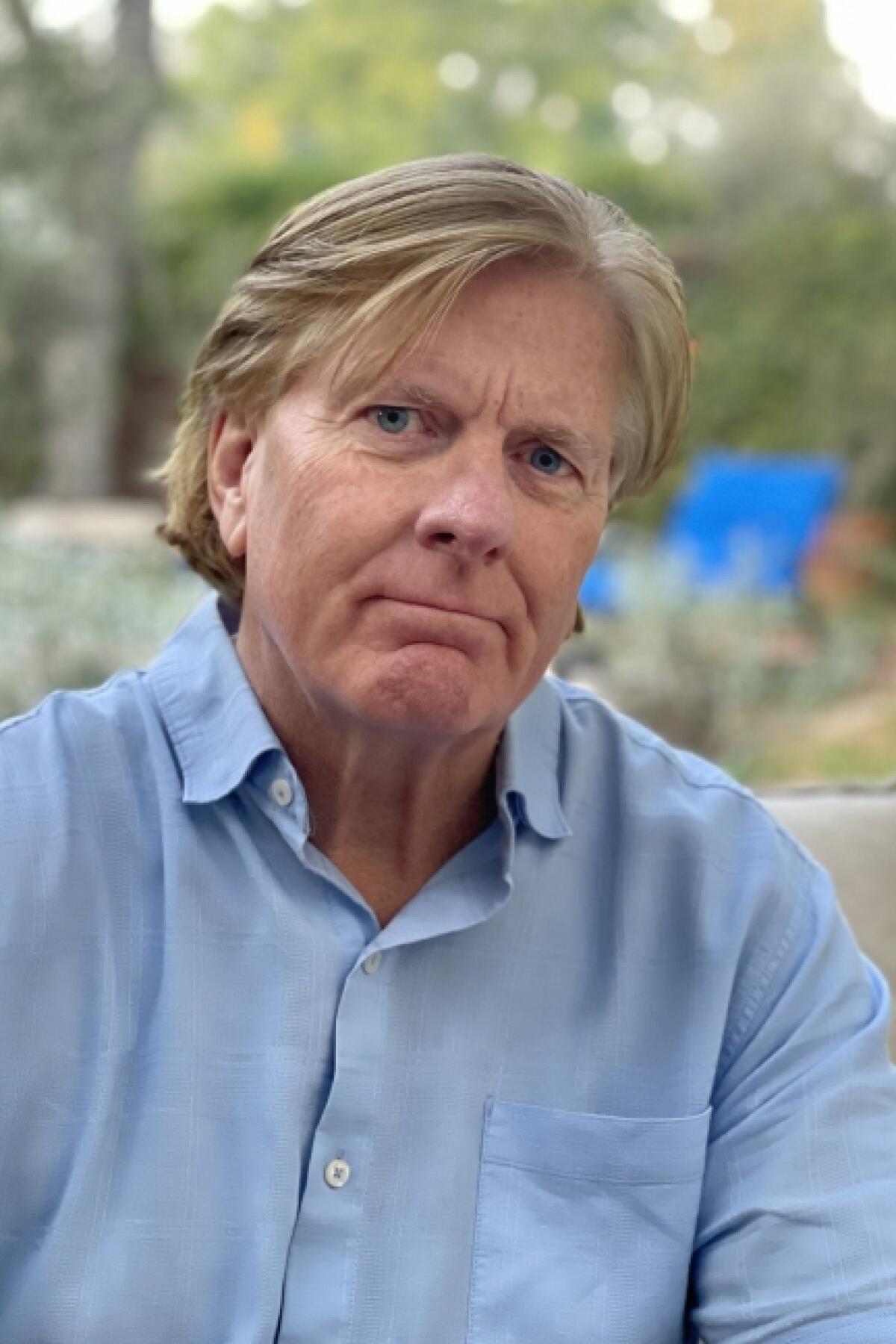
On the Shelf
Bad City: Peril and Power in the City of Angels
By Paul Pringle
Celadon: 304 pages, $30
If you buy books linked on our site, The Times may earn a commission from Bookshop.org, whose fees support independent bookstores.
There are moments in Paul Pringleâs book âBad Cityâ when the reporter faces an unexpected obstacle in his campaign to expose malfeasance at USC â his own bosses at the Los Angeles Times. The newspaperâs two top editors, he writes, repeatedly cut, defang and in one case move to spike the stories Pringle is working to bring to light, sordid tales about the drug and sex habits of Carmen Puliafito, the sleazy dean of USCâs medical school, and the universityâs enabling of his bad behavior.
Pringle is a veteran investigative reporter at The Times. âBad Cityâ is set in a recent past â 2016 to be precise â when Davan Maharaj was The Timesâ editor in chief. (I worked at The Times under Maharaj from 2011 to 2014.) As Pringleâs story dies its slow death, Pringle begins to wonder if Maharaj is in cahoots with USCâs top honchos, and eventually he and his colleagues go undercover inside their own newspaper. (Maharaj disputes the assertion that he was unaware additional reporters were helping Pringle develop the story.) Itâs a startling twist that makes âBad Cityâ a powerful and truly original addition to the genre of investigative-journalism drama.
Instigating this drama are two major scandals at USC involving two doctors employed by the university: the medical school dean, Carmen Puliafito, and a gynecologist who worked at USCâs student health center. Both doctors took advantage of young women to satisfy their prurient desires. Eventually, the book becomes a pointed critique of USCâs culture of secrecy and its shameful efforts to protect its public image. The universityâs supporting role in the Varsity Blues college admissions scandal serves as a kind of coda to a dark tale of privilege, amorality and coverups. By the end of âBad City,â even the most die-hard Trojans fans will find their loyalty severely tested.
The investigative-reporter genre tropes abound, and Pringle comes by them honestly. As in âAll the Presidentâs Men,â he has a secret source with a cool nickname providing invaluable insider information: a high-ranking USC official he identifies as âTommy Trojan.â And as in the film âSpotlight,â Pringle becomes part of a team of reporters who work tenaciously to untangle a web of corruption thatâs destroying the lives of weak and vulnerable people.
Times reporters dove deep to investigate the medical school dean at USC and the schoolâs response to his actions. But getting the story into print, a new book alleges, was as complicated as the investigation itself.
Pringle had already written several exposĂŠs about USC when a tip about Puliafito fell into his lap in 2016. Puliafito, then 65, had booked a room at a Pasadena hotel for a drug binge with his 21-year-old girlfriend. When the woman overdosed, a manager at the hotel called 911. She was saved, but the manager was infuriated that neither the Pasadena police nor USC seemed interested in investigating the matter.
It takes a lot of dogged reporting to get at the truth of the Puliafito story, and Pringle describes it all with painstaking detail. A bit too much, perhaps. Few books have ever managed to convey just how tedious and frustrating investigative reporting can truly be: There is one unreturned phone call after another, repeated checks of real estate and criminal records that yield nada, several crosstown journeys to knock on a potential sourceâs door that end with bupkis. Pringle is stonewalled by the Pasadena police, and of course by USC, but still manages to come up with a powerful potential front-page story.
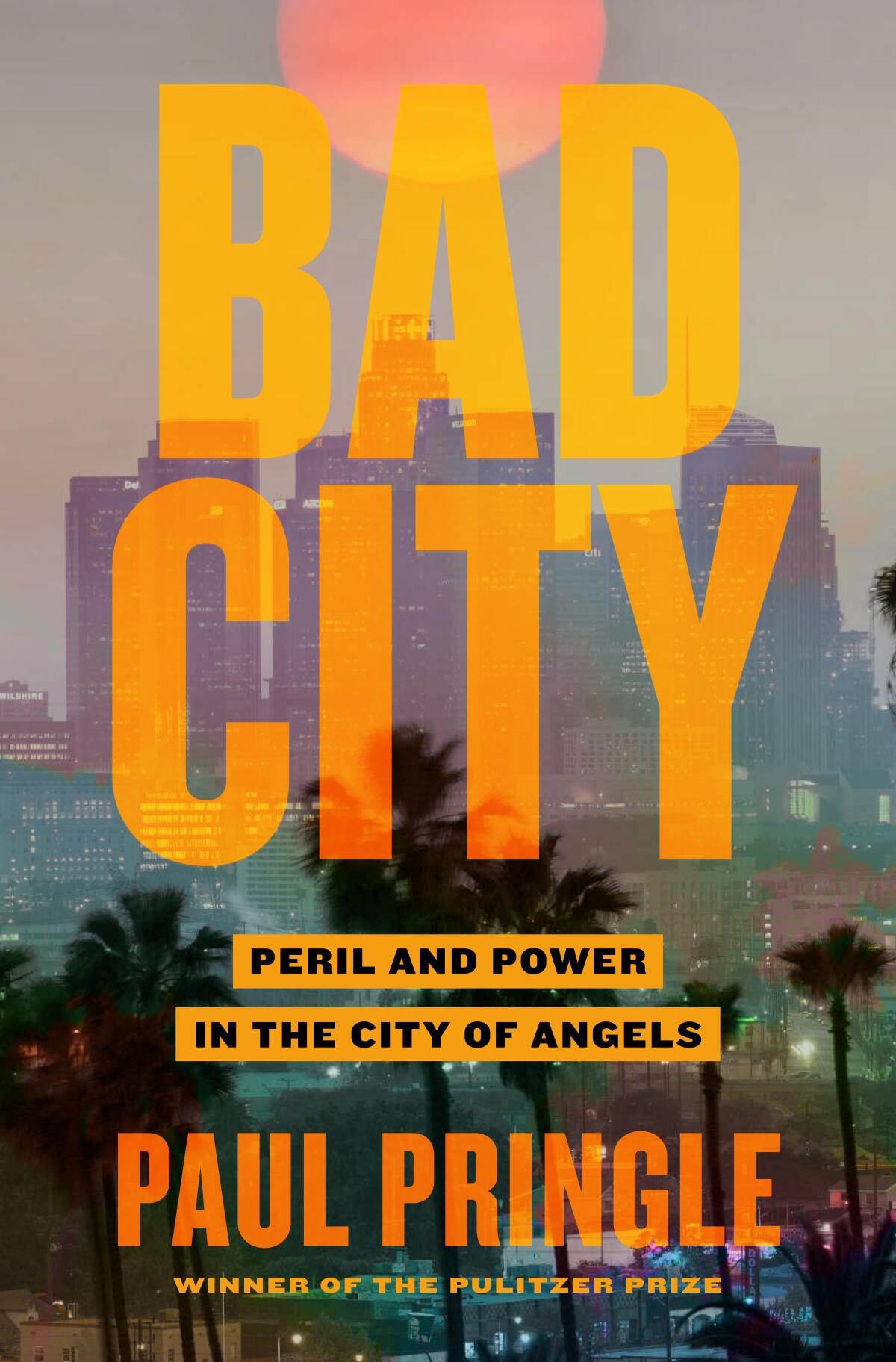
Enter the storyâs newsroom villain, Maharaj, who was then both the editor in chief and publisher of The Times. After several lower-ranked editors have approved Pringleâs story for publication, Maharaj calls him into his office. Pringle isnât hopeful. Maharaj is tight with USCâs then-president C.L. Max Nikias. Sure enough, like a crime family boss using coded language to deliver a threat, Maharaj reminds Pringle of all the favors heâs done for him (including granting Pringle leave during a death in the family), and then pronounces: âWe are not going to publish this story.â
(In communications to The Times, Maharaj denies this, saying he only informed Pringle that the story needed more work. In a recent Times story about Pringleâs book, Maharaj called the suggestion that management was out to protect USC âridiculous,â adding, âI and the other honorable senior editors who worked with me would never let any person or entity, including USC, dictate any aspect of our coverage.â His former No. 2, Marc Duvoisin, called âBad Cityâsâ storyline âa myth,â and said retraction demands have been served on the publisher.)
Hearing that Maharaj wonât publish Pringleâs story as it stands, city editor Matt Lait suggests they do an end-run around The Timesâ top brass: Lait secretly brings in more reporters to gather additional evidence to make the story on the dean unassailable. Doing so requires some cloak and dagger on the part of the reporters so that Maharaj and Duvoisin wonât find out. The reporters avoid use of their company emails and meet in empty offices and other places where Maharaj, Duvoisin and their âalliesâ wonât see them. Pringle and his colleagues find themselves conducting âthe type of stealth insurgency against corporate management that we covered in other industries.â
When Pringle and his colleagues produce a new story that is once again defanged by Maharaj and Duvoisin, they contemplate the journalistic equivalent of a sit-down strike: removing their bylines from the story, an act that would send a clear message of protest to the rest of the newsroom.
In USCâs lecture halls, labs and executive offices, Dr. Carmen A. Puliafito was a towering figure.
For Pringle, this sad predicament has an added layer of journalistic tragedy; it reflects a power shift in which USC has eclipsed the Los Angeles Times in the cityâs power hierarchy. Once upon a time, The Times newsroom was so flush with cash that its employees called it âthe velvet coffin.â (They paid so well you would stay until you died.) But by 2016, The Times staff had shrunk from 1,200 journalists to 400, while USC had grown to become one of the largest employers in Southern California. âA balance of power that existed between USC and The Times for generations had been subverted â so that it had become tilted in USCâs favor,â Pringle writes.
But all newspapers, big and small, tread lightly when dealing with the powerful players in their own backyards. Back in the late 1980s, when I was a lowly night reporter and The Timesâ circulation was near its peak of more than 1 million, I eavesdropped as a group of the paperâs top investigative journalists engaged in a newsroom battle much like those described in âBad City.â Faced with an editor in chief who insisted they cut key elements from an exposĂŠ about Mayor Tom Bradley, the writers stood next to my computer terminal and whispered: âWe could tell them weâll take our bylines off the story.â
Undeterred, Pringle and his colleagues press on in their reporting and dive deeper into the pathetic world of petty criminals in which Puliafito has immersed himself. They uncover the identity of the 21-year-old woman Puliafito is manipulating; sheâs hopelessly addicted, and the doctor supplies her with drugs even when sheâs in rehab. Thereâs as much crystal meth use in âBad Cityâ as there is in âBreaking Bad,â and they share some dark comedy too (with shades of Denis Johnsonâs fiction). Pringle, though, describes it all in the hard-boiled tone of âDragnet.â In one especially outrageous scene, Puliafito brings a pair of addicts into his office at the Keck School of Medicine, where they don the doctorâs USC lab coat and an inflatable Trojan hat after smoking heroin.
In the end, the reportersâ stubbornness results in the publication of the story and numerous follow-ups â and helps lead to a big shakeup at The Times, the book alleges. Maharaj and Duvoisin are fired, though the paperâs corporate owner â at the time, Tronc â denies their departure is connected to how they handled Pringleâs reporting. The Timesâ crises continue until the paper is sold in 2018 to Dr. Patrick Soon-Shiong. And USC continues to lord it over a big chunk of the city.
The journalist talks about his new book, âThe Last Great Road Bum,â which draws on the diary of Midwesterner Joe Sanderson, killed in El Salvador.
In âBad Cityâ Pringle has provided us with a book that reveals how power works in Los Angeles, a city where a new brand of film-noir corruption thrives in our tech-economy landscape. Itâs a city where the privileged do everything they can to protect their friends and allies, and where small groups of insurgents work tirelessly to drag their behavior out into the light of day.
Tobar is the author, most recently, of the novel âThe Last Great Road Bum.â
More to Read
Updates
2:44 p.m. July 19, 2022: This article has been updated with a comment from Davan Maharaj.
Sign up for our Book Club newsletter
Get the latest news, events and more from the Los Angeles Times Book Club, and help us get L.A. reading and talking.
You may occasionally receive promotional content from the Los Angeles Times.
